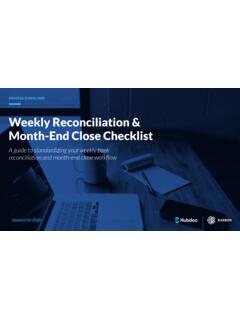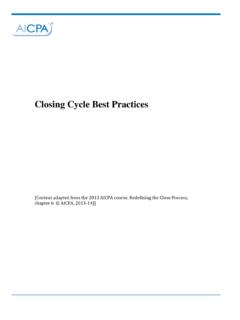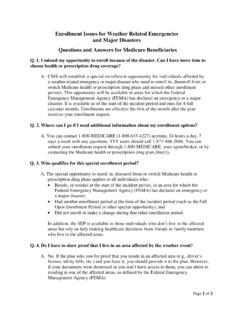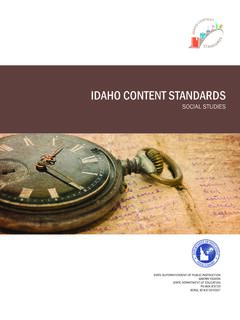Transcription of Medicare Secondary Payer ESRD Introduction
1 Medicare Secondary Payer ESRD Introduction Monday, April 4, 2022 Page 1 of 25 Medicare Secondary Payer ESRD Introduction Slide 1 of 23 - Medicare Secondary Payer ESRD Introduction Slide notes Welcome to the Medicare Secondary Payer (MSP) End Stage Renal Disease (ESRD) course. Medicare Secondary Payer ESRD Introduction Monday, April 4, 2022 Page 2 of 25 Slide 2 of 23 - Disclaimer Slide notes While all information in this document is believed to be correct at the time of writing, this Computer Based Training (CBT) is for educational purposes only and does not constitute official Centers for Medicare & Medicaid Services (CMS) instructions.
2 All affected entities are responsible for following the instructions found on the CMS Web site at the following link: CMS Website. Medicare Secondary Payer ESRD Introduction Monday, April 4, 2022 Page 3 of 25 Slide 3 of 23 - Course Overview Slide notes This course will provide an in-depth discussion of the MSP guidelines for persons entitled to Medicare because of ESRD. The course then addresses MSP as it relates to those individuals that have dual entitlement to Medicare , ( , entitled to Medicare for more than one reason), , ESRD and Age, or ESRD and Disability. Multiple examples are provided to assure clarity of the guidelines.
3 Medicare Secondary Payer ESRD Introduction Monday, April 4, 2022 Page 4 of 25 Slide 4 of 23 - MSP Guidelines for ESRD Slide notes The MSP provisions of the Social Security Act require Group Health Plans (GHPs) to make payments before Medicare under certain circumstances. Medicare is the Secondary Payer under the ESRD provisions of MSP if all of the following conditions are met: The beneficiary is on Medicare solely due to ESRD. Dual entitlement situations are discussed later in this course. Second, the beneficiary is covered by a GHP. Third, the beneficiary is within a 30- month coordination period. Next, we will provide greater detail on each of the three requirements.
4 Medicare Secondary Payer ESRD Introduction Monday, April 4, 2022 Page 5 of 25 Slide 5 of 23 - MSP Guidelines for ESRD Slide notes The first requirement we will examine is that the beneficiary is on Medicare solely due to ESRD. Typically, the beneficiary will be under age 65, however, it is possible, although rare, for a beneficiary to be age 65 or older and on Medicare due solely to ESRD. A person is eligible for Medicare under ESRD if a regular course of dialysis has been prescribed by a physician when the person has reached that stage of renal impairment, where a kidney transplant or regular course of dialysis is necessary to maintain life.
5 To obtain Medicare coverage, once a person is eligible for Medicare , he/she must apply for enrollment in Medicare . If the application for enrollment is accepted, Medicare coverage may begin. Medicare Secondary Payer ESRD Introduction Monday, April 4, 2022 Page 6 of 25 Slide 6 of 23 - MSP Guidelines for ESRD Slide notes Under the law, when a beneficiary is on Medicare solely due to ESRD, Medicare coverage begins at different times for different people depending on the circumstances. Medicare coverage usually starts the first day of the third month after the month in which a course of regular dialysis begins. All, or a portion of, the three- month waiting period may be waived if the individual participates in a self-dialysis training program, or if the individual has a kidney transplant within the three- month waiting period.
6 It is important to note that the 30- month coordination period always begins on the date the individual is first eligible to enroll in Medicare due to ESRD. If, for example, an individual fails to submit a timely application for Medicare or chooses not to apply for Medicare , the 30- month coordination period will be calculated with a start date based on the month in which he/she could have been enrolled, had an application for Medicare been made. This will be discussed in more detail later in the course. Medicare Secondary Payer ESRD Introduction Monday, April 4, 2022 Page 7 of 25 Slide 7 of 23 - MSP Guidelines for ESRD Slide notes The second requirement for Medicare to be the Secondary Payer under ESRD is that the beneficiary be covered by a Group Health Plan.
7 Any Group Health Plan the beneficiary is covered by is primary to Medicare . The insured person under the Group Health Plan does not need to have current employment status in order for the GHP to be primary. The ESRD guidelines apply to anyone covered by a GHP on any basis, including current and former employees. If a person has GHP coverage as a retiree, the GHP can be primary to Medicare . Employer size is not a consideration under the ESRD guidelines. A Group Health Plan that covers an employer of a single employee would be primary to Medicare . Medicare Secondary Payer ESRD Introduction Monday, April 4, 2022 Page 8 of 25 Slide 8 of 23 - MSP Guidelines for ESRD Slide notes The third requirement for Medicare to be the Secondary Payer under ESRD is that the beneficiary is within a 30- month coordination period.
8 The period of time in which Medicare is the Secondary Payer is limited to 30 months. As addressed on slide 6, the 30- month coordination period always begins on the date the individual first becomes entitled to enroll in Medicare because of ESRD. As stated previously, if timely application for Medicare benefits does not occur, and thus, coverage under Medicare is delayed, or if the individual chooses not to apply for Medicare , the 30- month period begins on the date the individual was first eligible to enroll in Medicare . Medicare becomes the primary Payer of benefits after the 30- month coordination period ends, as long as the individual retains Medicare eligibility based on ESRD.
9 A beneficiary may have more than one 30- month coordination period. Also, Medicare entitlement for an individual will end if he/she and has not received dialysis for 12 months or if 36 months have passed since the beneficiary has had a successful kidney transplant. Medicare Secondary Payer ESRD Introduction Monday, April 4, 2022 Page 9 of 25 Slide 9 of 23 - MSP Guidelines for ESRD Slide notes In this first example, Mr. Rose is age 40 and started a regular course of dialysis in October 2004. After the three- month waiting period, he enrolled in Medicare on January 1, 2005. Mr. Rose s spouse is actively employed and covers him with her Group Health Plan.
10 The 30- month coordination period when Group Health Plan coverage is primary runs from January 1, 2005, through June 30, 2007. On July 1, 2007, Medicare becomes the primary Payer of benefits. It should be noted that when the Group Health Plan is the primary Payer of benefits, it is primary for all services rendered, not just those that are related to ESRD. Medicare Secondary Payer ESRD Introduction Monday, April 4, 2022 Page 10 of 25 Slide 10 of 23 - MSP Guidelines for ESRD Slide notes This second example is a continuation of the first. In the first example, it was stated that Medicare became the primary Payer of benefits July 1, 2007.














